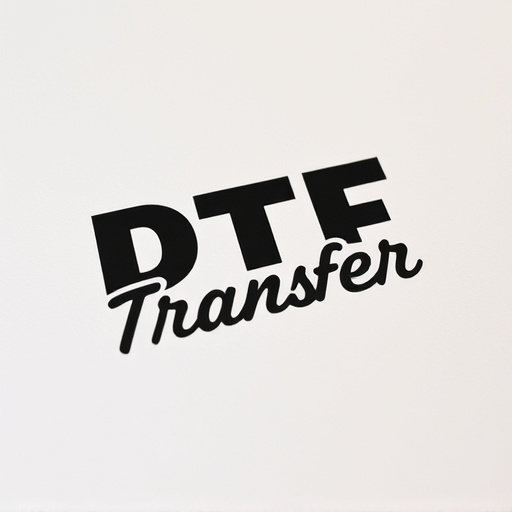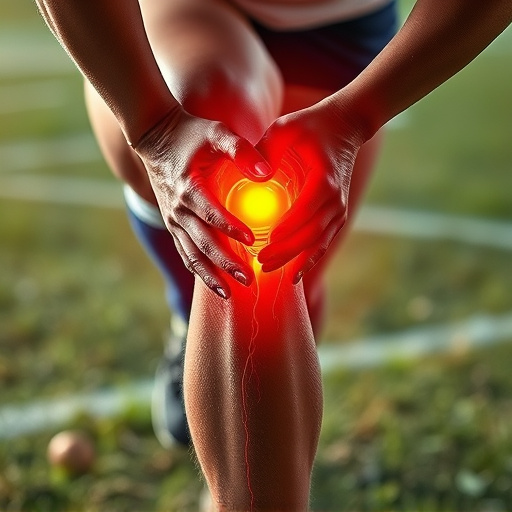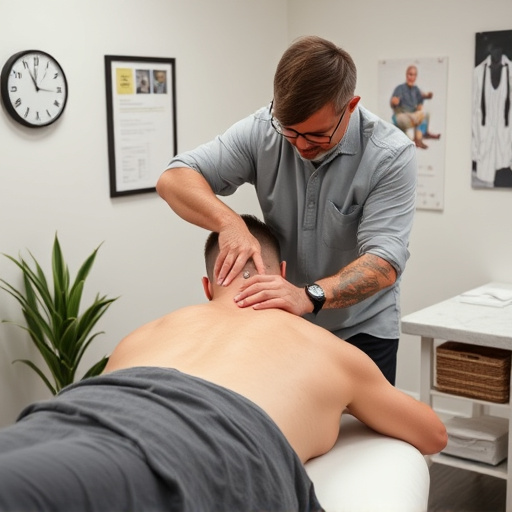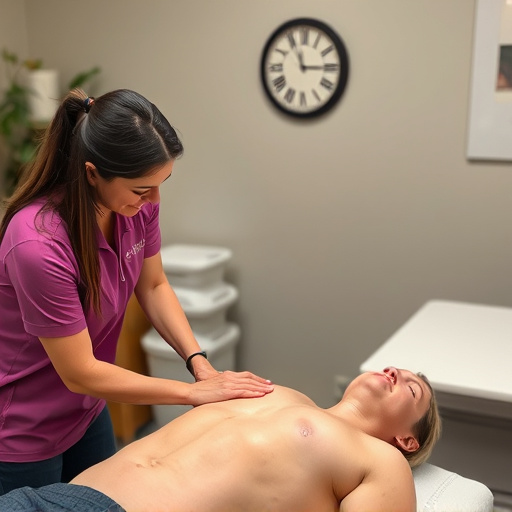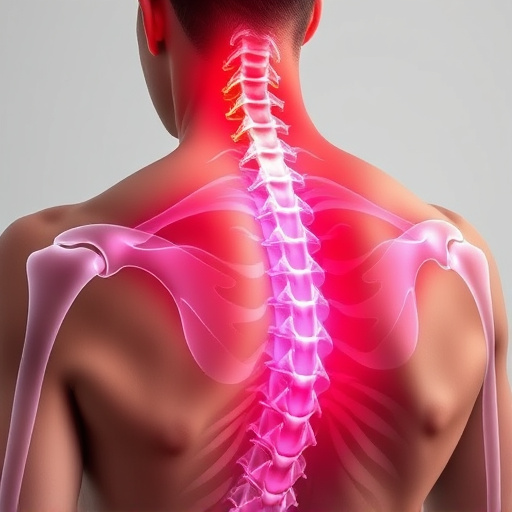Shockwave therapy, using high-energy sound waves, revolutionizes athletic rehabilitation for shockwave sports injuries, offering non-invasive pain relief and tissue repair for conditions like tendonitis and muscle strains. As an alternative to traditional methods, it facilitates faster recovery and safe return to sport for athletes, with success stories from elite sports teams and professional athletes.
“In the realm of sports medicine, shockwave therapy emerges as a game-changer in treating muscle and tendon pain. This non-invasive procedure is revolutionizing recovery for athletes, offering a new approach to managing chronic injuries. The article delves into the science behind shockwave therapy, its precise targeting abilities, and real-world success stories from professional athletes. By understanding this innovative treatment, sports enthusiasts and professionals alike can navigate their road to recovery more effectively.”
- Understanding Shockwave Therapy for Sports Injuries
- Targeting Muscle and Tendon Pain Effectively
- Real-World Success Stories: Shockwave for Athletes
Understanding Shockwave Therapy for Sports Injuries

Shockwave therapy for sports injuries has emerged as a game-changer in the realm of athletic rehabilitation. This non-invasive treatment utilizes high-energy sound waves, known as shockwaves, to stimulate healing and repair damaged muscle and tendon tissues. By promoting the natural regenerative process of the body, shockwave therapy can significantly alleviate pain and improve function for athletes recovering from acute or chronic injuries.
Unlike traditional chiropractic care or auto accident recovery methods, shockwave sports injuries treatments offer a unique approach by directly targeting active healing responses in the body. This makes it an effective solution for conditions like tendonitis, muscle strains, and other soft tissue traumas commonly encountered in high-performance sports. As a result, many athletes are turning to this cutting-edge therapy as an alternative or complement to conventional treatment options, helping them return to their sport faster and safer.
Targeting Muscle and Tendon Pain Effectively

Effective targeting of muscle and tendon pain associated with shockwave sports injuries is a multifaceted approach. It involves understanding the specific injury type and its underlying causes. Techniques such as manual therapy, rest, ice, compression, and elevation (RICE protocol) are foundational for initial management. Additionally, advanced treatments like extracorporeal shockwave therapy (ESWT) have shown promising results in alleviating pain and promoting healing in both muscles and tendons. ESWT works by delivering low-energy shockwaves to the affected area, stimulating cellular activities that can accelerate tissue repair.
Integrating chiropractic care as a complementary treatment option for neck pain associated with sports injuries is another effective strategy. Chiropractic manipulation, combined with targeted exercises and patient education, can help reduce pain, improve mobility, and prevent further strain on the injured muscles and tendons. This holistic approach ensures that athletes receive comprehensive care tailored to their individual needs, ultimately contributing to faster recovery and a return to peak performance.
Real-World Success Stories: Shockwave for Athletes

In the realm of shockwave sports injuries, real-world success stories are abundant among elite athletes who have sought non-invasive treatments for muscle and tendon pain. Many professional sports organizations have embraced shockwave therapy as a game-changer in injury rehabilitation, particularly for chronic pain management. This cutting-edge technology has been instrumental in helping athletes return to their peak performance levels faster and safer.
For instance, many soccer players have benefited from shockwave treatment for tendinopathy, a common issue leading to severe headache relief and reduced playing time. Similarly, basketball players have found success in managing acute muscle strains using this innovative approach. These stories not only highlight the effectiveness of shockwave therapy but also its potential to revolutionize sports medicine by enhancing injury recovery without the need for extensive surgery or lengthy physical therapy.
Shockwave therapy has emerged as a game-changer in the realm of treating sports injuries, particularly muscle and tendon pain. By effectively targeting affected areas, this non-invasive approach offers athletes a safe and efficient alternative to surgical interventions. The success stories shared highlight the positive impact on recovery times and performance, making shockwave therapy an increasingly popular choice for those seeking relief from chronic or acute muscle and tendon injuries. As research continues, it’s clear that shockwave sports injuries applications are revolutionizing athletic rehabilitation.



